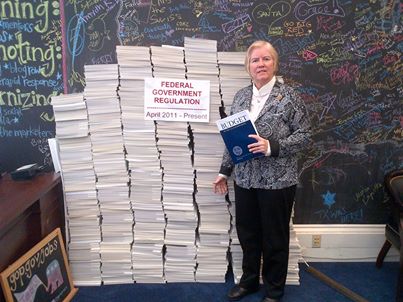Question
My shop is in a large old industrial building with several tenants and just a single meter, so the landlord divvies up the bill based primarily on sub-meters, but with his own unique landlordian alchemy applied.
At move-in I installed a 3-phase service panel with a meter that records all my machinery use. However I cannot pull 110 volt lines from the 3-phase due to the version of 3-phase in the building (no ground I think). I use 2 single-phase lines that were already in place, for lighting and for portable power tool use. Now I'm a one-man operation, and never had more than one full-time helper, so my typical 3-phase usage runs only $50-$75/month.
The guy's been hitting me for an additional 2-3 times as much for the single-phase non-metered electric. Example: $75 three phase (actual) + $225 single-phase (guesstimated) = $300 bill. When I was cranking it out with a helper, this was not worth a gripe, but when struggling to stay afloat, it's gotten under my skin.
So, is there an easy way to gauge kwh/electricity based on the time something is used and its amperage? Basically, aside from the 3-phase machines, I run a radio 50 hrs/week, lighting maybe 20 hrs/wk (about 24 4-ft fluorescent bulbs), and a 2-ft. cube fridge all the time. Plus a handful of hours for electric sanders. It just doesn't add up in my head that my single-phase usage could be triple what my machinery costs to run. But I'm open to being wrong if a rational explanation can be made.
Forum Responses
(Dust Collection and Safety Equipment Forum)
From contributor S:
Interesting dilemma. Naturally, the best solution would be to install a meter on your electric service. That likely is expensive and difficult.
I then thought of the "Kill A Watt" devices, but I think they only measure individual appliances. Then I googled and found the PowerCostMeter. This device looks pretty slick. It would appear to simply clamp onto your incoming electric line, and it transmits power usage (wirelessly) to a base station receiver - up to 100 feet away. This seems like an inexpensive way to measure/monitor power usage, and at least accurate enough to settle your mind as to what you are being charged for power.
This product would only work if you are at the end of the line. If you are in the middle of the line, I don't see why you couldn't install an additional unit that would measure the power used by tenants beyond you, then subtract the outgoing from the incoming.
Prior to ordering - be sure to ask if multiple transmitters working in close proximity will/might interfere with each other.
Whenever I (or my neighbor) would start the well, we would write down the electric and also the water meter readings, but more often than not, when the utility company man would stop by and read the meter, the well would be running. That meant there was no definite or consistent starting and ending point.
To confuse things further, I watered my farm with an open flow discharge, but my neighbor built 60 psi of pressure for a sprinkler system, so an acre-foot of my water was much less expensive than an acre-foot of his water.
And so, in defense of the landlords, trying to determine an accurate split on electric usage is difficult at best. In my case, it was more than difficult, it was a frustrating, time consuming pain in the a**.
I suppose what I'm asking is, do you have your own breaker panel that serves you and no-one else? If so, it would be a relatively simple matter to rig up and measure the power flowing through your breaker panel.
But even if we can meter your usage separately, you will still have some inaccuracy with respect to the total monthly electric bill, unless you read your submeter at the very same instant the utility company reads their meter - and that's not gonna happen.
If it were me, I would go out and get myself a transformer to drop the 208vac (230vac??) down to the 120 that you need. This would get you off of your landlord's meter all together. Or use contributor P's suggestion and report him anonymously.
I am going to install some light fixtures that can run on 220 volts through my 3-phase. That will reduce my use of the single phase one notch. The single phase I use is in two different old service panels that have numerous circuits that run all over the place. The lighting circuit and the power tool circuit serve my space only, so if there is a measuring device that can be applied to these two circuits, I'd have a potential solution.
